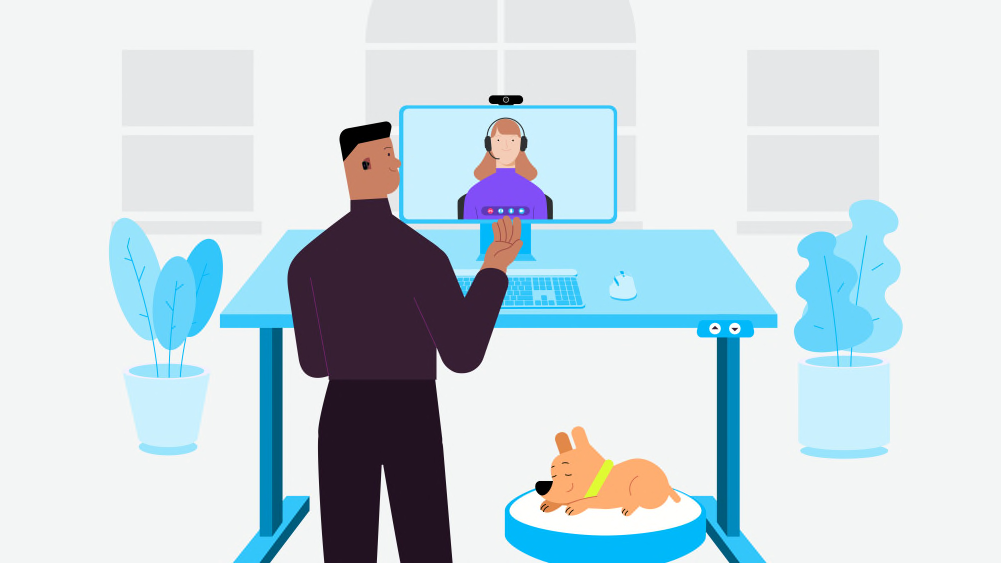Video Fatigue Is Widespread – But Manageable
10 Tips To Reduce Virtual Meeting Fatigue

Meeting fatigue is a well-documented condition — but one that can be cured. Sometimes referred to as “Zoom fatigue” (due to Zoom’s popularity), this phenomenon took hold during the pandemic when office employees suddenly found themselves working from home and relying heavily on video meetings to continue working and collaborating. It seemed everyone was constantly on video meetings all day long — and feeling exhausted. Now more than a year later, we can draw lessons from this period.
In this second part of a two-part series, we provide practical advice about combating virtual meeting fatigue. In part one, we introduced this topic and looked at the question of why virtual meetings affect people differently than other types of meetings, including conference calls and meetings in person.
Strategies for Fighting Meeting Fatigue
The reality is that video meetings will continue to be an important tool for collaboration and social connection. As one expert put it, “In the coming months, the issue facing organizations is not cutting back video conferencing; it's determining how best to manage its use and minimize video fatigue."
With this in mind, here are some strategies organizations and employees can implement to make sure every meeting is efficient, a valuable use of time, and designed to minimize virtual meeting fatigue.
- Keep meetings short. Challenge the assumption that meetings have to be 30 minutes or an hour just because that’s the default setting on calendar apps.

- Make room for small talk. Social connection is a preventative against burnout and fatigue. Rather than a waste of time, banter and bonding at the beginning of a video meeting is an investment in shared experience and personal connection1https://www.pilotonline.com/inside-business/vp-ib-expert-wade-0524-20210525-mbosj7pvgjcy5pmomaguf2ftmq-story.html
- Block time for productive work. Setting aside time in the morning or afternoon when you are at your most productive can ensure you’re not trading your best time for someone else’s meeting.
- Implement meeting-free days. More companies are imposing restrictions or limits on employee meetings2https://www.cnbc.com/2021/05/25/firms-are-dialing-back-on-video-calls-to-avoid-zoom-fatigue.html, including implementing no-meeting days.
- Stand up and move around between meetings. Data suggests that during the pandemic, workers have increased the amount of time they sit. This sedentary behavior is associated with increased stress and poor health. A short walk between meetings might be a literal lifesaver.

- Consider standing during meetings. Not only does standing minimize fatigue, it also tells colleagues that you’re engaged in the meeting.
- Turn off notifications to minimize distractions. Factors that compete for your attention, like email notifications, may not be a problem during a voice call. But in video meetings, they are – and fatigue is one of the side effects3https://searchunifiedcommunications.techtarget.com/tip/Companies-must-rethink-video-conferencing-usage.
- Use a professional webcam. A high-quality, enterprise-grade webcam improves video quality and allows you to better control how you present yourself in video meetings. Additionally, purpose-built webcams provide video conferencing features that are absent in the cameras included in laptops, tablets, and monitors.
- Choose a headset that fits your needs and style. For effective collaboration and healthy social connection in video meetings, hearing and being heard is as important as being seen. Look for a vendor that offers a variety of styles and form factors — wired, wireless, and earbuds — to match your budget and preferences
- Select equipment that is certified to work with video conferencing platforms. A major advantage of enterprise-grade headsets and webcams is that they are (or should be) certified for use with video conferencing software like Microsoft Teams® , Google Meet™ and Zoom™, allowing you to use integrated functionality designed for these applications. Perhaps more importantly, certifications are an important seal of approval, assuring quality and reliability.
As these ideas suggest, virtual meeting fatigue is not an inevitable feature of today’s workplace. By investing in the health of their employees through good training and good equipment, organizations can reduce or eliminate the problem.
YOU MAY ALSO BE INTERESTED IN
Browse Categories: